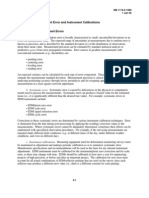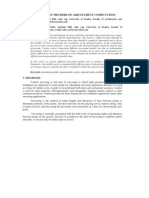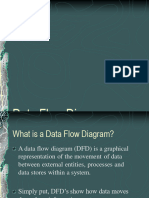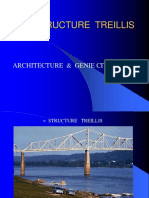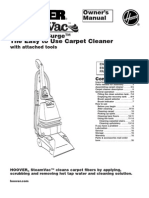Accuracy Analysis of Diferent Probes Used in Articulated Arm Coordinate Measuring Machines
Accuracy Analysis of Diferent Probes Used in Articulated Arm Coordinate Measuring Machines
Uploaded by
Agustin Brau AvilaCopyright:
Available Formats
Accuracy Analysis of Diferent Probes Used in Articulated Arm Coordinate Measuring Machines
Accuracy Analysis of Diferent Probes Used in Articulated Arm Coordinate Measuring Machines
Uploaded by
Agustin Brau AvilaOriginal Title
Copyright
Available Formats
Share this document
Did you find this document useful?
Is this content inappropriate?
Copyright:
Available Formats
Accuracy Analysis of Diferent Probes Used in Articulated Arm Coordinate Measuring Machines
Accuracy Analysis of Diferent Probes Used in Articulated Arm Coordinate Measuring Machines
Uploaded by
Agustin Brau AvilaCopyright:
Available Formats
10th International Symposium on Measurement and Quality Control 2010, September 5-9
ACCURACY ANALYSIS OF DIFERENT PROBES USED IN ARTICULATED
ARM COORDINATE MEASURING MACHINES
Jorge SANTOLARIA
1
, Juan Jos AGUILAR
1
,
Agustn BRAU
1
, Lorenzo VILA
1
1
Design and Manufacturing Department, C.P.S Universidad de Zaragoza, Mara de Luna 3, 50018 Zaragoza,
jsmazo@unizar.es
Abstract:
A very important task in a normal measurement
operation or in the procedure of identifying the parameters
of a kinematic model of an articulated arm coordinate
measuring machine (AACMM) is the process of capturing
data. This paper analyzes the probing error when using
different probing systems (self-centering passive probe and
self- centering active probe) in both, the measurements of
geometric primitives and data capture procedure for
kinematic parameter identification. Moreover, the influence
of the probing direction over the error is analyzed through
its components in each of the axis-directions of the sixth
reference system of the measurement arm. This influence is
presumably attributable to the forces exerted during the
probing process in different directions to the probe
orientation. With this analysis it is possible to establish
correlations between the probing error, the probing direction
and the position of the AACMM to get that position and
orientation. Furthermore, an analysis of the accuracy and
repeatability of the captured points has been carried out by
comparing these points to nominal points materialized by a
ball-bar gauge distributed in several positions of the
measurement volume. The results with each of the systems
studied show the advantages and original accuracy obtained
with the self-centering active probe, and thus its suitability
in verification and kinematic parameter identification
procedures.
Keywords: Articulated arm coordinate measuring machine,
Probing error, Self-centering active probe, Self-centering
passive probe.
1. INTRODUCTION
Due to the increased utilization of AACMM in the
automotive, aerospace, railroad and energy industries; faster
and more reliable calibration and kinematic parameter
identification procedures are constantly sought, and a key in
those procedures is the process of capturing data [1-7]. In
[8], a new calibration method probing more than one sphere
of a ball bar gauge is proposed.
Once the parameters have been identified, the best
attainable accuracy in this type of equipment will greatly
depend on the type and number of positions captured by the
AACMM or robot arm [9, 10] and, ultimately, on the extent
to which the number of influences on the capture of points
can be minimized. Because the AACMM is a manually-
operated instrument, the probing error will depend on the
probing force exerted by the operator and the current
AACMM position at the same point. This probing force
causes deformation to the gauge or to the probe [11, 12]
which can result in the loss of accuracy in the verification
procedure or during the process of capturing data for
parameter identification.
In this work we present an analysis of the accuracy and
repeatability obtained by two different probing systems
(self-centering passive probe and self- centering active
probe). In addition, the influence of the probing force over
the self-centering passive probe measurements is analyzed,
showing the advantages of the self-centering active probe in
both, calibration and kinematic parameter identification
procedures. The fundamental characteristic of self-centering
probes is that, by a single probe, it is possible to directly
obtain the center of the sphere, instead of probing discrete
points on the sphere surface as shown in Fig.1.
Fig. 1. Probing the center of a sphere with passive and
active self-centering probes.
2. METHODOLOGY
The AACMM used in the present work is a 7DOF
Platinum series FARO arm with a typical 2-2-3
configuration, with a nominal value of semirange of 0.030
mm obtained in a single point articulation performance test
of the arm manufacturer.
056-1
10th International Symposium on Measurement and Quality Control 2010, September 5-9
In the process of probing the points a continuous data
capture method has been used for the self-centering probes.
The continuous capture technique allows the massive
capture of arm positions corresponding to several points of
the workspace. To this end, a ball-bar gauge of 1.5 m long
was placed in 7 positions within the workspace of the arm in
order to cover the maximum number of possible AACMM
positions, to subsequently extrapolate the results obtained
throughout the volume. Fig. 2 and Table 1 show the
considered positions for the bar in a quadrant of the
workspace. The ball-bar comprises a carbon fiber profile
and 15 ceramic spheres of 22 mm in diameter, reaching
calibrated distances between the centers with an uncertainty,
in accordance with its calibration certificate, of
(1+0.001L)m, with L in mm. In this configuration, 4
spheres of the gauge in each of the 7 positions considered
are probed, materializing 6 distances between their centers.
Fig. 2. Ball bar gauge test positions and support.
Table 1. List of ball bar gauge positions in quadrant 1.
Position
No.
Quadrants Tilt
Distance
B1
Direction
1 C1-C2-C4 Horizontal Medium Tangential
2 C1-C4 Horizontal Near Tangential
3 C1-C2 Horizontal Far Tangential
4 C1 Horizontal Near Radial
5 C1-C2-C4 +45 Medium Tangential
6 C1-C2-C4 -45 Medium Tangential
7 C1 Vertical Medium Tangential
For both self-centering probes, besides characterizing the
performance of the arm relative to error in distances, its
capacity to repeat measurements of a same point is also
tested. Hence, automatic arm position capture software has
been developed to probe each considered sphere of the
gauge and to replicate the arm behavior in the single-point
articulation performance test, but in this case, to evaluate its
repeatability. The rotation angle values of the arm joints for
each position, reached in the continuous probing of each
sphere, are stored to obtain the coordinates of the measured
point with respect to the global reference system for any set
of parameters considered. In this way, with the self-
centering probes in contact with the sphere, it is possible to
capture the maximum possible number of arm positions,
thus covering a large number of arm configurations for each
sphere considered. The centering of the probe direction with
regards to the sphere center is ensured with the self-
centering probes, making this direction cross it (Fig. 1b) for
any orientation of the probe. Thus, it is possible to define in
this case a probe with zero probe sphere radius and with a
distance of 22 mm from the position of the housing to the
center of the probed sphere, allowing direct probing of the
sphere center when the three spheres or planes of the probes
and the sphere of the gauge are in contact.
3. TEST AND RESULTS
In the configuration presented for both probes, results of
distance errors between centers have been obtained for each
of the 6 distances materialized in each of the 7 ball bar
positions. The mean point of all the captured data for each
sphere was considered as the center of the probed sphere
(Fig. 1a). Measured distances for each sphere in the 7
different positions were compared with the distances
obtained with the ball bar gauge thus obtaining the error in
distance (Fig. 3). In the case of positions 3, 4 and 7, three
spheres were not measured, so a value of zero was assigned
in the graph. From Fig. 3, we can observe that on average,
the error made by the self-centering active probe was less
than the one corresponding to the self-centering passive
probe; the errors obtained with the active probe, when
greater than those corresponding to the passive probe, can
be associated to AACMM as it approaches its workspace
frontier. The three-dimensional distances between spheres
were obtained from the mean centers calculated for each
sphere; so that the distance
jk
i
D from sphere j to sphere k of
position i is given by equation 1:
2 2 2
( ) ( ) ( )
jk
ij ik
i ij ik ij ik
D X X Y Y Z Z (1)
which is the euclidean distance between the points
(X
ij
,Y
ij
,Z
ij
) and (X
ik
,Y
ik
,Z
ik
) where
1
( )
ij
n
i j
m
i j
i j
X m
X
n
(2)
(n
ij
represents the number of angle combinations captured
for sphere j in identification position i of the gauge), and
analogously for the coordinates Y and Z. In this manner,
considering D
0jk
as the nominal distance between spheres j
and k obtained in the gauge calibration table, it is possible to
calculate the error in distance between spheres j and k in
location i given by
0
jk jk
i i ik
E D D (3)
Fig. 3. Error in distance of the centers measured.
056-2
10th International Symposium on Measurement and Quality Control 2010, September 5-9
The repeatability error values for all measured points are
shown in Fig. 4a and 4b, for the self-centering active probe
and self-centering passive probe respectively. These values
represent the errors made in X, Y and Z coordinates of each
one of the approximately 10000 points obtained,
corresponding to the 7 positions of the ball-bar gauge with
regards to the mean obtained for each sphere. The
repeatability error value for each coordinate as a function of
the 6 joint rotation angles is given by equation 4:
1 2 3 4 5 6
( , , , , , )
Xijk ij ij
X X
1 2 3 4 5 6
( , , , , , ) ij
Yijk ij
Y Y (4)
1 2 3 4 5 6
( , , , , , ) ij
Zijk ij
Z Z
It can be observed that the error made by the self-center
active probe is a lot smaller than the error made by the self-
center passive probe and that in both graphs the error shows
an increment in the z coordinate. This behavior in the z
coordinate could be explained by the fact that, unlike what
happens in the x and y coordinates, there is no self-
compensation effect in the gauge deformation due to the
probing force in this coordinate.
1000 2000 3000 4000 5000 6000 7000 8000 9000100001100012000
-0.15
-0.1
-0.05
0
0.05
0.1
0.15
Posi ti on
R
e
p
e
a
t
a
b
i
l
i
t
y
E
r
r
o
r
X
(
m
m
)
POS1 POS2 POS3 POS4 POS5 POS6 POS7
B1
B6
B10
B14
1000 2000 3000 4000 5000 6000 7000 8000 9000100001100012000
-0.17
-0.12
-0.07
-0.02
0.03
0.08
0.13
Posi ti on
R
e
p
e
a
t
a
b
i
l
i
t
y
E
r
r
o
r
Y
(
m
m
)
1000 2000 3000 4000 5000 6000 7000 8000 9000100001100012000
-0.25
-0.15
-0.05
0.05
0.15
0.25
Posi ti on
R
e
p
e
a
t
a
b
i
l
i
t
y
E
r
r
o
r
Z
(
m
m
)
Fig. 4a. Point repeatability errors for the 7 AACMM
positions using the active self-centering probe.
Fig. 4b. Point repeatability errors for the 7 AACMM
positions using the passive self-centering probe.
Another way of illustrating the influence of the probing
direction over the probing error is by expressing the error
magnitude in terms of the probed point reference system.
Fig. 5a shows the reference system linked to the last
articulation of the kinematic chain of the arm. By translating
this reference system to the probed point as shown in Fig.
5b, we can express the error magnitude in terms of the
probed point reference system. This is done for each of the
probed points on the sphere.
Fig.5. Reference system linked to last articulation of
AACMM (a) and magnitude error expressed in probed point
reference system (b).
Figure 6 shows the values of the X, Y and Z coordinates
expressed in the probed points reference system for all the
10000 points obtained, corresponding to the 7 positions of
the ball-bar gauge with respect to the mean obtained for
each sphere using the self-centering passive probe. As
expected, since the probing direction is similar to the Y
coordinate of the AACMM last articulation, the values in
the Y coordinate are greater than that in the X and Z
coordinate. This can be attributable to the probing force
exerted by the operator over the measuring arm.
Fig. 6. X, Y and Z values (mm) expressed in probed points
reference system.
056-3
10th International Symposium on Measurement and Quality Control 2010, September 5-9
In figure 7, the values of the six articulations of the arm
in position 1, when the maximum error exceeds .4 mm, are
saved. This is done by precisely knowing the maximum and
minimum values of the articulations throughout the tests and
then obtaining those articulations values when the error is
greater than .4mm. In the present graph, the range for each
articulation in the measuring process is represented by a
horizontal line of the same colour of the sphere being
measured. Moreover, Table 2 shows the percentage range of
angle values for any combination of angles that result in an
error greater than .4mm. This way, we can analyze the
distribution of the angles that result in an error and observe
if there is any pattern in any combination of articulation
values that correspond to an error greater than .4 mm. In this
particular analysis, no pattern could be observed, so most of
the probing error could be explained by the probing force.
Fig. 7. Combination of articulation angles of AACMM
where maximum error exceeds .4 mm.
Table 2. Percentage range for any combination of angle
values that result in errors greater than .4mm.
Sphere
Articulations
1 2 3 4 5 6
B1
65.44-
91.16
57.31-
91.07
3.58-
24.32
21.08-
69.15
85.44-
97.69
47.45-
100
B6
8.24-
61.42
72.66-
91.85
35.09-
69.70
3.74-
60.90
23.39-
58.57
48.56-
93.32
B10
0-
70.44
.069-
95.83
26.05-
100
17.68-
83.02
0-
81.34
26.18-
91.30
B14
13.88-
91.70
50.41-
95.79
22.48-
82.37
4.14-
71.10
9.07-
66.68
33.19-
83.42
4. CONCLUSIONS
In this work, a comparison of the accuracy and
repeatability between the self-centering passive probe and
self-centering active probe was carried out. In addition, an
analysis of the influence of the probing force over the final
error was done by means of the errors vector decomposition
and by expressing this decomposition in the probed point
reference system. Furthermore, as mentioned above, since
the final error depends on the combined influence of all
joints, with the presented analysis it is possible to determine
on one hand the influence over the error of the probing itself
and the relationship of that error with the AACMM pose if
there exists one, thus making possible to identify sets of
joint angle values that lead to greater probing errors. Finally,
the adequacy of the self-center active probes over self-center
passive probes for tasks such as capturing data for
verification and identification of kinematics parameters has
been demonstrated when no configuration or application
restrictions are imposed.
5. REFERENCES
[1] J . Denavit, R.S. Hartenberg, A kinematic notation for lower-
pair mechanisms based on matrices, Journal of Applied
Mechanics, Transactions of the ASME 77 (1955) 215-221.
[2] S. Hayati, M. Mirmirani, Improving the absolute positioning
accuracy of robot manipulators, Journal of Robotic Systems
2(4) (1985) 397-413.
[3] T.W. Hsu , L.J . Everett, Identification of the kinematic
parameters of a robot manipulator for positional accuracy
improvement, Computers in Engineering, Proceedings of the
International Computers in Engineering Conference and
exhibition (1) (1985) 263-267.
[4] L.J . Everett, M. Driels, B.W. Mooring, Kinematic modelling
for robot calibration, IEEE International Conference on
Robotics and Automation 1 (1987) 183-189.
[5] P.N. Sheth, J .J . Uicket, A generalized symbolic notation of
mechanism, ASME Journal of engineering for industrial
(1971) 102-112.
[6] H.W. Stone, A.C. Sanderson, C.F. Neumann, Arm signature
identification, IEEE International Conference On Robotics
And Automation 1 (1986) 41-48.
[7] H. Zhuang, Z.S. Roth, Robot calibration using the CPC error
model, Journal of Robotics and Computer Integrated
Manufacturing 9(3) (1992) 227-237.
[8] J . Santolaria, A. Brau, J . Velzquez, J .J . Aguilar, A self-
centering active probing technique for kinematic parameter
identification and verification for articulated arms coordinate
measuring machines, Measurement Science & Technology,
21, 055101 (2010) 11pp.
[9] G. Alici, B. Shirinzadeh, A systematic technique to estimate
positioning errors for robot accuracy improvement using
laser interferometry based sensing, Mechanism and Machine
Theory 40 (2005) 879906.
[10] G. Chunhe, Y. J ingxia, N. J un, Nongeometric error
identification and compensation for robotic system by
inverse calibration, International Journal of Machine Tools
and Manufacture 40 (2000) 2119-2137.
[11] A. Weckenmann, T. Estler, G. Peggs, D. McMurtry, Probing
Systems in Dimensional Metrology, CIRP Annals -
Manufacturing Technology, 53(2), 2004, 657-684.
[12] Puttock, M.J ., Thwaite, E.G., Elastic compression of spheres
and cylinders at point and line contact, Nat. Stds. Lab. Tech.
Paper No. 25, CSIRO (1969).
056-4
You might also like
- Joey Subiecte Cangur Engleza Martie 2020Document7 pagesJoey Subiecte Cangur Engleza Martie 2020Cristian Iuga100% (8)
- Traverse ReportDocument8 pagesTraverse Reporthibby_tomey100% (1)
- A Diagnostic Analysis of Seaweed Value Chains in Madura, IndonesiaDocument66 pagesA Diagnostic Analysis of Seaweed Value Chains in Madura, IndonesiaEly John KarimelaNo ratings yet
- 000 Uncertainty of Axi Symmetric Measurement MachineDocument8 pages000 Uncertainty of Axi Symmetric Measurement MachineAnonymous 7ZTcBnNo ratings yet
- 1 s2.0 S2212827112000960 MainDocument4 pages1 s2.0 S2212827112000960 MaindidactechboliviaNo ratings yet
- Jiao 2019Document8 pagesJiao 2019Snetok97No ratings yet
- Weikert 2004Document4 pagesWeikert 2004Research1 amtdcNo ratings yet
- Probe Error CheckingDocument30 pagesProbe Error CheckingRaj KumarNo ratings yet
- Applsci 08 01268 v2Document33 pagesApplsci 08 01268 v2Yunita silabanNo ratings yet
- UNSW Mining EngineeringDocument16 pagesUNSW Mining EngineeringAgus WinarnoNo ratings yet
- 1256509Document6 pages1256509nasermohjunaid9No ratings yet
- Error EdmDocument22 pagesError EdmFaizan FathizanNo ratings yet
- Measurement Lab.: University of Jordan Faculty of Engineering and TechnologyDocument6 pagesMeasurement Lab.: University of Jordan Faculty of Engineering and TechnologyKarikalan Loganathan100% (1)
- Using Auto Collimator Aim:: FormulaeDocument4 pagesUsing Auto Collimator Aim:: FormulaejeroldscdNo ratings yet
- zhao-et-al-2023-influence-of-reference-circles-on-the-evaluation-results-of-axis-straightness-errorsDocument11 pageszhao-et-al-2023-influence-of-reference-circles-on-the-evaluation-results-of-axis-straightness-errorsMichael EnnenNo ratings yet
- Measurement of Angular DisplacementDocument8 pagesMeasurement of Angular Displacementabinayanagaraj427No ratings yet
- Design and Control of Pid Controlled Ball and Beam SystemDocument6 pagesDesign and Control of Pid Controlled Ball and Beam SystemJessica RossNo ratings yet
- IMU CharacterizationDocument8 pagesIMU CharacterizationWill BlackNo ratings yet
- Use of Electronic Total StationDocument27 pagesUse of Electronic Total Stationbalu144No ratings yet
- Effects of Measuring Instrument and Measuring Points On Circular Coordinate Measurement PrecisionDocument6 pagesEffects of Measuring Instrument and Measuring Points On Circular Coordinate Measurement Precision자면진다No ratings yet
- C !" !! !#$"%&'!$ (#) ( (C !" !!!#$"%+&+'!$ +!%PMDocument8 pagesC !" !! !#$"%&'!$ (#) ( (C !" !!!#$"%+&+'!$ +!%PMing_nistorNo ratings yet
- Modification of The Error Equation in Angular Theodolite MeasurementsDocument10 pagesModification of The Error Equation in Angular Theodolite MeasurementsLeroy Lionel SonfackNo ratings yet
- 14 YanDocument9 pages14 YanPrimitivo GonzálezNo ratings yet
- Increasing Accuracy of Tilt MeasurementsDocument12 pagesIncreasing Accuracy of Tilt MeasurementsRăzvan PopaNo ratings yet
- ASME B89.4.19 Performance Evaluation Tests and Geometric Misalignments in Laser Trackers VolumeDocument15 pagesASME B89.4.19 Performance Evaluation Tests and Geometric Misalignments in Laser Trackers VolumeJDNo ratings yet
- Use of A Laser Tracker To Actively Coordinate The Motion of A 3 Meter Industrial Robot To Within 50 MicronsDocument7 pagesUse of A Laser Tracker To Actively Coordinate The Motion of A 3 Meter Industrial Robot To Within 50 MicronsClenaNo ratings yet
- Abbe Error/Offset: SynonymsDocument4 pagesAbbe Error/Offset: Synonymsفرح تامرNo ratings yet
- AutocollimatorDocument5 pagesAutocollimatorkaran singhNo ratings yet
- 01investigatinglaserscanneraccuracy I3mainz BoehlerMarbs 2003Document19 pages01investigatinglaserscanneraccuracy I3mainz BoehlerMarbs 2003giftpaulnkhomaNo ratings yet
- CMM InterpetationDocument6 pagesCMM InterpetationJai UshaNo ratings yet
- Borehole Desurvey CalculationDocument8 pagesBorehole Desurvey CalculationRon BurgessNo ratings yet
- Notes of Lesson Surveying IiDocument0 pagesNotes of Lesson Surveying IideepakjoghuNo ratings yet
- linxiang1992Document5 pageslinxiang1992Michael EnnenNo ratings yet
- Verification of A Laser Tracker With An Indexed Metrology PlatformDocument12 pagesVerification of A Laser Tracker With An Indexed Metrology PlatformMariNo ratings yet
- 7.total Station Instruments Angle Measurement: Elementary Surveying, 2005 Assoc. Prof. Dr. Sönmez SayiliDocument8 pages7.total Station Instruments Angle Measurement: Elementary Surveying, 2005 Assoc. Prof. Dr. Sönmez SayiliAlfredo Sto. DomingoNo ratings yet
- Scanning Probe Microscope Dimensional Metrology at Nist: Home Search Collections Journals About Contact Us My IopscienceDocument12 pagesScanning Probe Microscope Dimensional Metrology at Nist: Home Search Collections Journals About Contact Us My IopscienceubuyukduruNo ratings yet
- JournalrffDocument7 pagesJournalrffajibola4mumNo ratings yet
- Analyse of MEMS Based Inertial Sensors Parameters For Land Vehicle Navigation ApplicationDocument5 pagesAnalyse of MEMS Based Inertial Sensors Parameters For Land Vehicle Navigation ApplicationminhaaaNo ratings yet
- Straightness Measurements For Accelerator StructuresDocument14 pagesStraightness Measurements For Accelerator Structureselson_paulNo ratings yet
- 10 1 1 491 750 PDFDocument6 pages10 1 1 491 750 PDFSumanNo ratings yet
- A Machine Vision System For Inspecting BearingsDocument4 pagesA Machine Vision System For Inspecting BearingsDeepak SharmaNo ratings yet
- Measuring Helix Angle of GearsDocument6 pagesMeasuring Helix Angle of Gearsdarshan.hegdeb100% (1)
- A High-Precision Method For Dynamically Measuring Train Wheel Diameter Using Three Laser Displacement TransducersDocument13 pagesA High-Precision Method For Dynamically Measuring Train Wheel Diameter Using Three Laser Displacement TransducersBruno SchallNo ratings yet
- Gaschler 2011 BDocument6 pagesGaschler 2011 BCoke LatNo ratings yet
- GyrosDocument6 pagesGyrosversineNo ratings yet
- DSA Image Registration Based On Multiscale Gabor Filters and Mutual InformationDocument6 pagesDSA Image Registration Based On Multiscale Gabor Filters and Mutual InformationerdoganaaaNo ratings yet
- Calibration of Photomasks For Optical Coordinate MetrologyDocument12 pagesCalibration of Photomasks For Optical Coordinate MetrologyAlessandroAbateNo ratings yet
- Trudhristovska TEMELIssue1Document5 pagesTrudhristovska TEMELIssue1Mifa ZakuNo ratings yet
- HTTPWWW Jamris Org042009saveas Phpquestjamrisno042009p172-174Document3 pagesHTTPWWW Jamris Org042009saveas Phpquestjamrisno042009p172-174JavierVeraNo ratings yet
- Spur Gear Inspection-1Document8 pagesSpur Gear Inspection-1Venkateswaran venkateswaranNo ratings yet
- 3D Seismic Survey Design OptimizationDocument7 pages3D Seismic Survey Design OptimizationSuta VijayaNo ratings yet
- Circularity ErrorDocument8 pagesCircularity Errorganesh_the_aviatorNo ratings yet
- Abbe Error/Offset: January 2015Document7 pagesAbbe Error/Offset: January 2015Po YntNo ratings yet
- TrabasDocument6 pagesTrabasFatin HazwaniNo ratings yet
- Research Article: Articulated Arm Coordinate Measuring Machine Calibration by Laser Tracker MultilaterationDocument12 pagesResearch Article: Articulated Arm Coordinate Measuring Machine Calibration by Laser Tracker MultilaterationtomNo ratings yet
- 201 Questions AnswersDocument21 pages201 Questions Answersrohith51No ratings yet
- Group#11 - Laboratory Work #2 - Total StationDocument8 pagesGroup#11 - Laboratory Work #2 - Total StationDias MukhanovNo ratings yet
- Applied Metrology for Manufacturing EngineeringFrom EverandApplied Metrology for Manufacturing EngineeringRating: 5 out of 5 stars5/5 (1)
- Theoretical method to increase the speed of continuous mapping in a three-dimensional laser scanning system using servomotors controlFrom EverandTheoretical method to increase the speed of continuous mapping in a three-dimensional laser scanning system using servomotors controlNo ratings yet
- Topics On Optical and Digital Image Processing Using Holography and Speckle TechniquesFrom EverandTopics On Optical and Digital Image Processing Using Holography and Speckle TechniquesNo ratings yet
- Nature & Creation of Atty-Client RelationshipDocument8 pagesNature & Creation of Atty-Client RelationshipGrachelle AnnNo ratings yet
- C2 Audit Question BankDocument38 pagesC2 Audit Question Banksanjeevcnb888No ratings yet
- VBAC Patient Information LeafletDocument8 pagesVBAC Patient Information Leafletmamik.suliyati7No ratings yet
- Terms of Reference MFADocument2 pagesTerms of Reference MFAKEEVINNo ratings yet
- License Agreement: Beauty Retouch Panel V3.3Document1 pageLicense Agreement: Beauty Retouch Panel V3.3Banda Sinfónica Juvenil CuernavacaNo ratings yet
- Bcos 183Document4 pagesBcos 183BIBIN bijuNo ratings yet
- Data Flow DiagramDocument25 pagesData Flow DiagramTiziah Vylet ValerosoNo ratings yet
- Grievenance ProcedureDocument5 pagesGrievenance ProcedureAsad AftabNo ratings yet
- Topic 4 Early Muslim Community Topical Past PapersDocument123 pagesTopic 4 Early Muslim Community Topical Past PapersDaniyal ZubairNo ratings yet
- Soal Ulangan Harian Bahasa Inggris Kelas 9Document14 pagesSoal Ulangan Harian Bahasa Inggris Kelas 9de rantiNo ratings yet
- 3D Recording, Documentation and Management of Cultural Heritage - Remondino Stylianidis (Eds.) (2016)Document417 pages3D Recording, Documentation and Management of Cultural Heritage - Remondino Stylianidis (Eds.) (2016)Lígia TriquesNo ratings yet
- Interview Questions and AnswersDocument2 pagesInterview Questions and AnswersC Fay ManNo ratings yet
- Foreign Exchange Dealers' Association of India: General Guidelines/InstructionsDocument18 pagesForeign Exchange Dealers' Association of India: General Guidelines/InstructionsSUVANKAR NANDINo ratings yet
- CBSE Maths XI STDDocument175 pagesCBSE Maths XI STDRajendra KumarNo ratings yet
- Failures, Errors and Risks in Computer System Presentation (0024)Document21 pagesFailures, Errors and Risks in Computer System Presentation (0024)SWEET ranaNo ratings yet
- Test 3 - 10 Grade - Why Go To SchoolDocument2 pagesTest 3 - 10 Grade - Why Go To Schoolaz0969962121No ratings yet
- Civil Law Mock Bar QuestionsDocument3 pagesCivil Law Mock Bar QuestionsRony MareanNo ratings yet
- Data Collection Training ManualDocument125 pagesData Collection Training ManualgfonpetNo ratings yet
- Structure TreillisDocument12 pagesStructure TreillisBELBEDJNo ratings yet
- Java Programming: Program Requirements Guide 2021-2022Document2 pagesJava Programming: Program Requirements Guide 2021-2022Serdar TunalıNo ratings yet
- Lady GagaDocument14 pagesLady GagaAntoni Hans Aliaga AlonzoNo ratings yet
- MSCB 139 CertDocument6 pagesMSCB 139 CertAsalvador MVNo ratings yet
- Emlectures 2Document87 pagesEmlectures 2Abc GoogleNo ratings yet
- Endoluminal and Technology Symposium - RIRS and Complication For Stone ManagementDocument2 pagesEndoluminal and Technology Symposium - RIRS and Complication For Stone ManagementAndarSiregarNo ratings yet
- Impulsive Buying Behavior of Restaurant Products in Social Commerce: A Role of Serendipity and Scarcity MessageDocument16 pagesImpulsive Buying Behavior of Restaurant Products in Social Commerce: A Role of Serendipity and Scarcity MessageDivya Darshini SaravananNo ratings yet
- Hoover F5914900Document40 pagesHoover F5914900mattjvaNo ratings yet
- WWW - Deped.gov - ph/wp-content/uploads/2016/11/DO s2016 72corr PDFDocument61 pagesWWW - Deped.gov - ph/wp-content/uploads/2016/11/DO s2016 72corr PDFShella VillanuevaNo ratings yet
- Magpul 2012 Catalog Shotgun Stocks and MagazinesDocument26 pagesMagpul 2012 Catalog Shotgun Stocks and MagazinesPredatorBDU.comNo ratings yet












